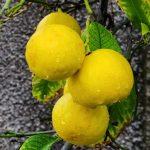Fermented Wisdom in a Seed
Iru, known elsewhere as dawa‑dawa or ogiri‑okpei, starts with African locust beans boiled until soft, dehulled, then left to ferment in banana leaves. The slow process coaxes flavor so potent that a teaspoon perfumes a whole pot of stew. Long before microbiologists named Lactobacillus, Yoruba and Hausa cooks mastered this method to preserve protein through harmattan and monsoon alike.
Science of Flavor
During fermentation, enzymes break protein chains into amino acids, releasing glutamates that spark the savory sensation labeled umami. Salt is minimal, so the condiment boosts depth without overshooting sodium targets. Home cooks find that iru locust beans rounds out tomato bases, tames bitterness in efo riro, and lends Ogbono soup an earthy undertone.
Nourishment and Wellness
Beyond taste, locust beans supply calcium, iron, and soluble fiber. Studies at universities in Ibadan and Dakar show that the fermentation step raises B‑vitamin levels and reduces antinutrients found in raw seeds. The result supports gut health and aids mineral uptake, qualifying iru as both spice and supplement.
Stock Forms and Shipping Methods
Vendors sell three main forms: fresh paste packed in ice, semi‑dried nuggets vacuum‑sealed, and fully dried pellets milled into powder. Fresh paste demands overnight air freight with gel packs; once received, it freezes well. Semi‑dried nuggets handle a week in transit and rehydrate within minutes in warm water. Powder travels easily by sea, making it the budget choice for monthly meal prep.
Cooking Without Waste
A little iru goes far. Drop a marble‑sized portion into hot palm oil, stir until it melts, then tip in onions and peppers. The aroma signals diners from rooms away. If powder is on hand, half a teaspoon equals roughly two nuggets; sprinkle near the end of cooking to keep fragrance alive.
Regional Dishes Revisited
Iru flavors stewed okra in southwestern Nigeria, tuwo beans in Niger, and black‑eyed pea fritters across Benin. Chefs abroad experiment with it in miso soup, lending a West African accent to Japanese broth, or whip it into compound butter for steak. The condiment proves that culinary borders bend under creative minds.
Future of Small‑Batch Fermentation
As demand grows, entrepreneurs invest in solar dryers and stainless‑steel fermentation tanks that raise hygiene standards without erasing traditional methods. Some projects train youth on safe fermentation, pairing ancestral practice with food‑safety certification. Online stores act as the final link, turning local skill into global supply.
Keeping Heritage on the Table
Ordering iru through a trusted site secures more than seasoning. It sustains knowledge passed down in courtyards where grandmothers still wrap warm beans in leaves at dawn. Each spoonful whispers that distance may stretch across oceans, yet flavor remains within reach.





















Follow Us!